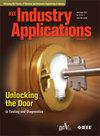电动汽车BMS电池平衡技术研究进展综述
IF 4.2
2区 工程技术
Q2 ENGINEERING, ELECTRICAL & ELECTRONIC
引用次数: 0
摘要
近年来,电动汽车(EV)电池的热问题引发了严重的爆炸危险。电池管理系统(battery Management system, BMS)是管理电池运行的高级系统。BMS的一个重要作用是细胞平衡(CB)。本文着重综述了电动汽车BMS燃烧技术的实践和最新进展。本文还探讨和分析了基于人工智能(AI)、机器学习(ML)和人工神经网络(ANN)的CB技术在BMS设计和运行方面的最新进展。CB现象主要分为主动平衡(AB)和被动平衡(PB)两种。不同的AB和PB技术通过适当的描述、电路图、模型方程和表格进行了详细说明。通过最近的案例研究,突出了每种技术的优点、缺点和实际应用。通过传统的PB技术、比例积分(PI)控制器和基于神经网络的BMS,平衡过程中的电流依次从1.56 A - 0.87 A - 0.2 A减小。因此,散热从2.02 KJ - 0.19 KJ - 0.01 KJ降低,温升从2.35°C - 1.03°C - 0.1°C降低。这意味着基于人工神经网络的BMS比基于pi和传统的PB技术具有经济的设计、优越的性能和更高的效率。因此,这项最新技术可以令人满意地提高电动汽车的电池寿命和续驶里程。本文章由计算机程序翻译,如有差异,请以英文原文为准。
Recent Advancements in Cell Balancing Techniques of BMS for EVs: A Critical Review
Recently, a severe danger has evolved regarding the explosion of Electric Vehicle (EV) batteries due to their thermal issues. A proficient system is employed for managing the operations of the battery, which is the Battery Management System (BMS). A vital role of the BMS is Cell Balancing (CB). This work emphasized reviewing the practical and recent advancements in CB techniques of BMS for EVs. The latest developments in the design and operation of BMS implementing Artificial Intelligence (AI), Machine Learning (ML), and Artificial Neural Network (ANN)-based CB techniques are also explored and analyzed here. CB phenomenon is largely grouped as the Active Balancing (AB) and Passive Balancing (PB) methods. The different AB and PB techniques are elaborately illustrated with appropriate descriptions, circuit diagrams, model equations, and tables. The pros, cons, and practical applications of each technique are highlighted through the recent case studies. The current during the balancing gets decreased from 1.56 A–0.87 A–0.2 A by the customary PB technique, the Proportional Integral (PI)-controller, and the ANN-based BMS sequentially. As a result, the dissipated heat is reduced from 2.02 KJ–0.19 KJ–0.01 KJ, and the rise in temperature gets reduced from 2.35 °C–1.03 °C–0.1 °C. This implies that the ANN-based BMS provides economical designing, superior performance, and enhanced efficiency than the PI-based and customary PB techniques. Therefore, this latest technology can satisfactorily increase the battery lifecycle and driving range of EVs.
求助全文
通过发布文献求助,成功后即可免费获取论文全文。
去求助
来源期刊

IEEE Transactions on Industry Applications
工程技术-工程:电子与电气
CiteScore
9.90
自引率
9.10%
发文量
747
审稿时长
3.3 months
期刊介绍:
The scope of the IEEE Transactions on Industry Applications includes all scope items of the IEEE Industry Applications Society, that is, the advancement of the theory and practice of electrical and electronic engineering in the development, design, manufacture, and application of electrical systems, apparatus, devices, and controls to the processes and equipment of industry and commerce; the promotion of safe, reliable, and economic installations; industry leadership in energy conservation and environmental, health, and safety issues; the creation of voluntary engineering standards and recommended practices; and the professional development of its membership.
 求助内容:
求助内容: 应助结果提醒方式:
应助结果提醒方式:


